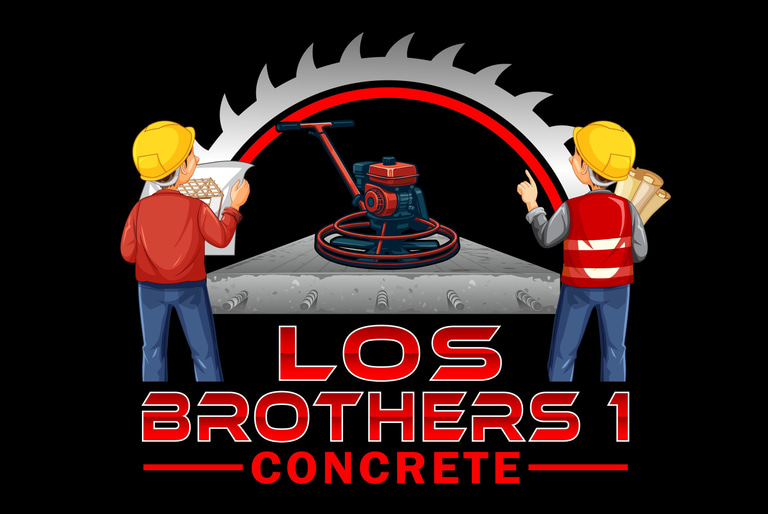CALL US TODAY! → (863) 348-2601 / (863) 257-1120
Understanding Concrete Foundations: A Homeowner's Guide to Construction Integrity
A solid foundation means peace of mind—see how we build them right.
7/13/20255 min read


The Importance of Concrete Foundations in Construction
Concrete foundations serve as the backbone of any structure, playing a crucial role in its overall stability and durability. The primary function of a concrete foundation is to distribute the load of the building evenly across the ground beneath it. This weight distribution is essential in preventing localized settlement, which can lead to structural damage over time. By ensuring that the loads are adequately supported, concrete foundations minimize the risk of cracks and shifting that can occur in less stable foundation types.
Additionally, a well-constructed concrete foundation acts as a barrier against moisture intrusion, which can lead to various problems such as mold growth and deterioration of building materials. The impermeability of concrete helps maintain a dry environment beneath the structure, thus enhancing the longevity of both the foundation and the superstructure. Moreover, concrete foundations can resist natural forces such as wind and seismic activity, further safeguarding the integrity of the building.
When considering the choice of foundation materials, using inferior options can have dire consequences. Poor foundation choices can result in structural issues that compromise the safety and functionality of the entire building. Common problems include significant settling unevenly, which might manifest as cracks in walls, doors and windows that don’t align properly, and damage to plumbing systems. For homeowners and contractors, investing in a quality concrete foundation is vital to ensuring a sound, reliable structure that stands the test of time.
In summary, concrete foundations are indispensable in construction due to their ability to provide an even weight distribution, prevent settling and shifting, and protect against moisture. By prioritizing high-quality concrete foundations, homeowners can ensure a safer and more durable investment, ultimately enhancing the structural integrity of their properties.
Types of Concrete Foundations
When selecting a foundation for a building, understanding the different types of concrete foundations is crucial. The most common types are slab foundations, crawl space foundations, and basement foundations. Each type has unique characteristics and benefits, making them suitable for various construction scenarios.
A slab foundation consists of a single layer of concrete, usually poured directly onto the ground. This type of foundation is favored in warmer climates where the ground is less prone to freezing. One of the primary benefits of a slab foundation is its cost-effectiveness, as it requires less material and labor compared to other types. Additionally, slab foundations offer quick construction timelines, which can significantly speed up overall project completion. However, they may not be ideal for areas with high moisture levels or expansive soils, as these conditions can lead to cracking.
Crawl space foundations are designed to elevate the home above ground level, creating a space between the soil and the structure. This design provides easy access to plumbing and electrical systems while improving airflow and moisture control. Crawl spaces can also be beneficial in regions prone to flooding, as the elevation helps to mitigate water damage. However, they require additional materials and labor, which can increase overall costs compared to slab foundations.
Basement foundations are the most robust option, extending below ground level to create a livable space. They offer significant benefits, including extra storage, increased property value, and enhanced protection against severe weather. However, basement foundations require extensive excavation and are often more expensive to construct than slab or crawl space types. It is essential to consider soil type, building design, and local climate conditions when selecting the appropriate foundation. Each type of concrete foundation offers distinct advantages, making them suitable for different circumstances in home construction.
Installation Process of Concrete Foundations
The installation of concrete foundations is a critical phase in construction, requiring attention to detail and adherence to specific guidelines. This process begins with site preparation, which involves clearing the area of any obstacles such as rocks, vegetation, and debris. It is essential to ensure that the site is level and free of any water accumulation, as these factors can significantly influence the integrity of the foundation.
Following site preparation, excavation takes place. This step involves digging the foundation trenches or holes to the appropriate depth, based on the design plans and soil conditions. The depth and width of the excavated area must meet local building codes to ensure stability. Contractors typically utilize tools such as excavators for this purpose, ensuring precise measurements to avoid future complications.
Once excavation is complete, the next step is forming. Formwork, usually made from wood or metal, is constructed to outline the shape of the foundation. This structure acts as a mold, holding the concrete in place as it cures. It is crucial that forms are secured properly to prevent shifting. Following the forming process, concrete pouring can commence. However, before pouring, reinforcement materials such as rebar may be added to enhance strength and load-bearing capacity.
The concrete is then poured into the prepared forms. This step must be executed efficiently to avoid premature setting of the concrete. Proper placement and vibration of the concrete help eliminate air pockets and ensure a dense, compact structure. After the concrete is poured, curing is essential. Curing is the process of maintaining adequate moisture and temperature to facilitate the hydration of the cement, achieving the desired strength and durability.
Lastly, leveling is performed to ensure the surface is smooth and even. This step not only enhances the aesthetic appearance of the foundation but also plays a role in ensuring the overall structural integrity. Adhering to local building codes throughout this installation process is crucial, as it guarantees compliance and safety, ultimately contributing to the longevity of the structure.
Common Mistakes to Avoid with Concrete Foundations
When constructing concrete foundations, homeowners and contractors must be aware of several common mistakes that can jeopardize the structural integrity of their projects. One prevalent error is inadequate drainage around the foundation. Poor drainage can lead to water accumulation, resulting in hydrostatic pressure that may cause foundation cracks or shifting. It is imperative to ensure proper grading and drainage systems are in place to channel water away effectively, thereby safeguarding the foundation from moisture-related issues.
Another frequent mistake is insufficient soil preparation before foundation pouring. Soil stability is a crucial factor in the longevity of concrete foundations. If the soil beneath the foundation is not thoroughly compacted or tested for its bearing capacity, it may not support the weight of the home, leading to settlement or heaving. Conducting pre-construction soil tests can help identify any necessary preemptive actions, such as soil stabilization or excavation, before laying the concrete.
Improper placement of reinforcement bars, or rebar, is yet another mistake that can compromise a concrete foundation's strength. Rebar is essential for enhancing concrete's tensile strength, and if it is not positioned correctly—such as being too close to the surface or spaced too far apart—the foundation may lack the durability needed to withstand external forces. Effective reinforcement placement ensures that the concrete can perform under stress and prolongs the structure's lifespan.
Lastly, a lack of leveling during the foundation pour can lead to uneven settling. Ensuring that the foundation is level is critical, as any discrepancies may cause structural damage over time. Homeowners and contractors should prioritize accurate leveling tools and techniques during the construction phase. By avoiding these common pitfalls, individuals can enhance the reliability and longevity of their concrete foundations, ultimately protecting their investment and ensuring the safety and stability of their homes.
Follow Us On Social Media
Contacts
Subscribe To Our Newsletter
Copyright © 2025 Los Brothers 1 Corp – "2 Brothers. 1 Strong Foundation!"
Fernando: (863) 348-2601
Rodrigo: (863) 257-1120
Hours
24/7 – We’re available day and night for your concrete needs.


